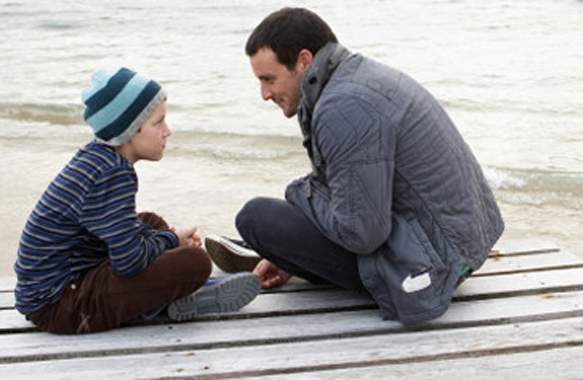By Jennifer Keys Adair | Originally Published at Huffington Post. October 15, 2014 12:16 pm EDT Updated: December 15, 2014 5:59 am EST
In the aftermath of Ferguson police officer Darren Wilson shooting and killing Michael Brown, I have been thinking about what young children are picking up from their parents, the news and their teachers about being a good white person.
Most parents of African-American boys will tell you that they are terrified of their children being killed or harassed by police who assume they are up to no good. But why aren’t more parents of white children worried about their children being the ones who discriminate or harass?
As a professor of early childhood education, I know that young children, particularly between the ages of 4 and 8, are learning who they are in relation to the rest of the world. They are branching out from the ideas of their parents and caretakers and entertaining the ideas of their classmates, teachers and neighbors. And they begin to form an identity as a member of a larger society.
In my house we call this learning how to be a good white person.
Some people believe that children are too young to talk about race and racism. Yet parents raising children of color do it all the time. Schoolmates make comments about their skin or hair. Movies or the news portray people who look like them in a negative way, which prompts questions. But children who are white do not have to think about it. They don’t have to ask why their parents were looked at funny in a fancy store or why someone yelled at them to go back to where they came from.
The Pew Research Center recently released findings that 80 percent of black people polled thought that the events in Ferguson raised “racial issues.” Yet only 37 percent of whites thought race had something to do with it, a pattern of racial divide that has continued for decades.
In the same Pew study, only 25 percent of white people reported that they were interested in the Ferguson story.
As a mother of white children, I cannot help thinking about my role in whether this pattern continues.
A couple days ago, I watched as my son was playing baseball with friends after school. One kid kept trying to be at bat but others would snatch the bat out of his hand and take turns hitting or pitching the ball. The kid trying to bat was African American and the six other children playing were white.
When I brought this up with my son, he said it was because he had already had a turn earlier in the day. I told him it was because of racism. And then I kind of freaked out, went a little overboard and told him that he didn’t think it was racism because he didn’t have to think about racism ever really. After I calmed down and apologized, I explained why him becoming a white person who can see racial discrimination and try to make it stop was so important to me.
I realized that these police shootings had made me even more terrified that if I don’t teach him about what racism looks like and acts like then he will think that police shootings are just accidents that coincidentally affect African-American boys. Just like he thought it was coincidence that the boy being left out was African American.
I have taught my son about oppression and racism since he was very young. And yet the learning curve is difficult for white children, just as it is for adults with little equitable experience or relationships with people of color. Because they don’t experience racism personally or see someone they love experience racism personally, it is hard for them to understand it happens.
And so police shootings and kids being left out of baseball are just coincidences or because the kid wasn’t doing what he was supposed to do, not because of a racist pattern over time.
Parents of white children should not wait to talk about race until their children bring it up.
Studies repeatedly show that parents of color are much more likely to talk about race with younger children than white parents. Issues of race are not easily acknowledged by the white community. And yet raising good white people requires that we change this.
Conversations about the news, about their friends and about the books they read can help parents talk to their children about judging people by their skin color. You can prompt discussions with children’s books that feature positive portrayals of children of color leading normal lives as well as children of color experiencing racial prejudice by white children and/or adults. You can tell them that racism ends when people of color say it ends.
Jennifer Keys Adair, Ph.D. is a professor of Early Childhood Education at The University of Texas at Austin, a young scholar fellow with the Foundation for Child Development and a public voices fellow with The OpEd Project. She also is the co-author of Children Crossing Borders and more of her work is at jenniferkeysadair.com.| Follow Jennifer at Twitter @jkeysadair
This piece was reprinted by EmpathyEducates with permission or license. We thank the Author, Professor Jennifer Keys Adair, Ph.D. for her kindness, observations, and a reflection so real and a vital conversation.












Leave A Comment